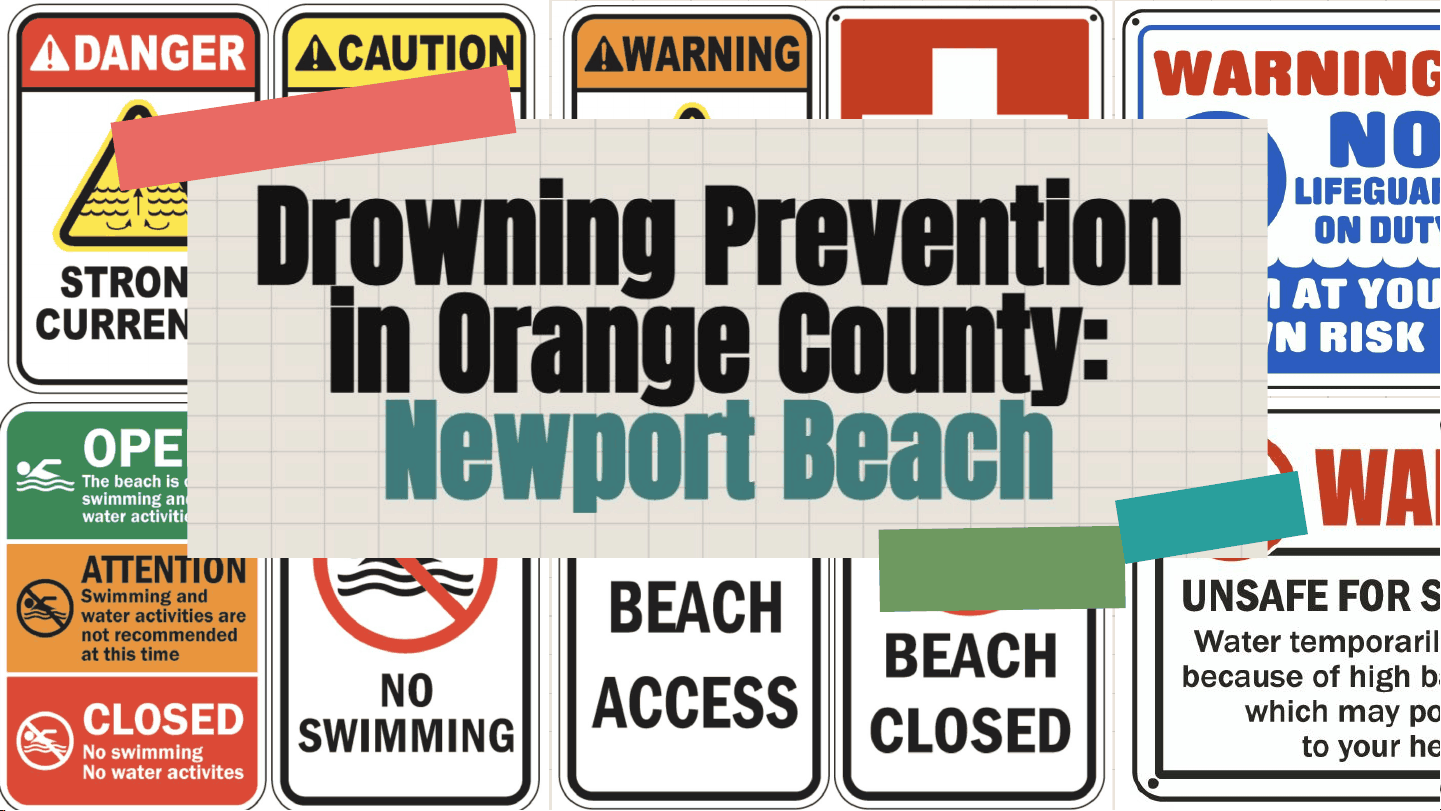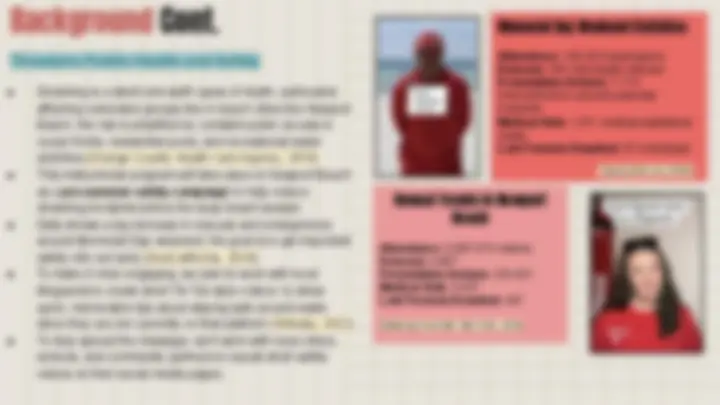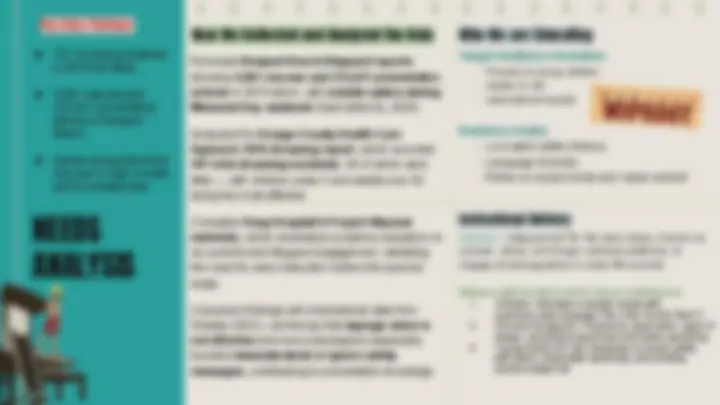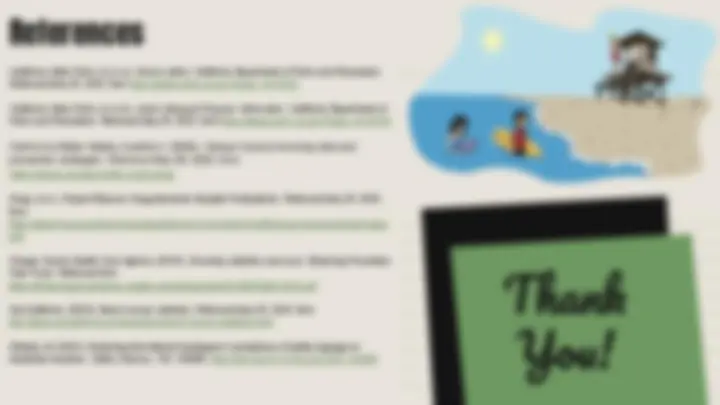






Study with the several resources on Docsity

Earn points by helping other students or get them with a premium plan


Prepare for your exams
Study with the several resources on Docsity

Earn points to download
Earn points by helping other students or get them with a premium plan
Community
Ask the community for help and clear up your study doubts
Discover the best universities in your country according to Docsity users
Free resources
Download our free guides on studying techniques, anxiety management strategies, and thesis advice from Docsity tutors
End of Term Signature Assigment
Typology: Study Guides, Projects, Research
1 / 8

This page cannot be seen from the preview
Don't miss anything!





NUR 4200: Population Health & Informatics Signature Assignment By: Ashley Avila-Dawson BSN-RS 008
Drowning remains a leading cause of injury-related death for young children in Orange County and is on the rise nationally. Between 2011–2013, over 100 drowning incidents occurred annually; in 2018, that number remained high with 107 total incidents, including 46 fatalities. Who's Most at Risk: ● Children under age 5 accounted for 36 incidents in 2018 — 31 were non-fatal, but 5 resulted in death. ● Older adults (65+) had the highest fatality rate, with 18 deaths out of 23 total incidents. ● Most child drownings occurred in pools/spas, while many adult drownings involved medical conditions, alcohol, or lack of supervision. Where It's Happening: Community and backyard pools were the leading locations for drownings. ● In 2018, Newport Beach lifeguards alone conducted 4,867 rescues and 224,621 preventative actions, highlighting the danger even in staffed public areas. (Orange County Health Care Agency, 2018)
Top contributing factors in 2018 included: ● Lapse in supervision (29%) ● Medical issues (8%) ● Alcohol use (10 incidents) ● Inadequate barriers and lack of swim skills (California Water Safety Coalition, 2024)
The Problem Drowning remains one of the leading causes of death for children under 5 and older adults in Orange County — especially in high-traffic beach cities like Newport Beach. Despite this, there is a lack of engaging, community-level drowning prevention education that reaches at-risk groups before peak summer season. (Orange County Health Care Agency, 2018) Why Instruction Is Needed
(SeeCalifornia, 2024) Instructional Approach To address this, we propose a community-driven pre-summer safety campaign in partnership with Hoag’s Project Wipeout, a program already focused on ocean safety education. Our goal is to work alongside Project Wipeout to co-develop or promote short, TikTok-style videos that deliver simple, high-impact water safety tips. These will be shared through social media, reposted by local schools, clinics, and community organizations, and possibly integrated into Project Wipeout's outreach efforts. This surge happens because Memorial Day kicks off the summer season, bringing in large crowds many of whom are tourists, inexperienced swimmers, or families unfamiliar with water safety practices. Contributing factors include^ alcohol use, lack of supervision, distractions , and a general underestimation of the ocean’s risks. While lifeguards and emergency responders work tirelessly, this data shows that they are overwhelmed during high-traffic times, and fatalities still occur despite rescue efforts. That’s why this a community-wide safety issue Problem Statement
NEEDS ANALYSIS Reviewed Newport Beach lifeguard reports showing 4,867 rescues and 224,621 preventative actions in 2018 alone, with notable spikes during Memorial Day weekend (SeeCalifornia, 2024). Analyzed the Orange County Health Care Agency’s 2018 drowning report, which recorded 107 total drowning incidents, 46 of which were fatal — with children under 5 and adults over 65 being the most affected. Consulted Hoag Hospital’s Project Wipeout materials, which emphasize proactive education on rip currents and lifeguard engagement, validating the need for early instruction before the summer surge. Compared findings with international data from Shibata (2022), reinforcing that signage alone is not effective and many beachgoers (especially tourists) misunderstand or ignore safety messages, contributing to preventable drownings. How We Collected and Analyzed the Data
California State Parks. (n.d.-a). Ocean safety. California Department of Parks and Recreation. Retrieved May 26, 2025, from https://www.parks.ca.gov/?page_id= SeeCalifornia. (2024). Beach rescue statistics. Retrieved May 26, 2025, from http://www.seecalifornia.com/beaches/beach-rescue-stati stics.html Shibata, M. (2022). Exploring international beachgoers’ perceptions of safety signage on Australian beaches. Safety Science, 152, 105966. https://doi.org/10.1016/j.ssci.2022. Hoag. (n.d.). Beach safety tips. Project Wipeout. Retrieved May 26, 2025, from https://www.hoag.org/about-hoag/department-of-commun ity-health/hoag-programs/project-wipeout/ Orange County Health Care Agency. (2018). Drowning statistics summary. Drowning Prevention Task Force. Retrieved from https://drowningpreventionoc.org/wp-content/uploads/ 9/05/Stats-2018.pdf Rationale for Instruction^ Evidence-Based ★ Even when signs are visible, many beachgoers don’t read or understand them. Studies show nearly half of beach visitors—including locals—rarely read safety signage or misinterpret terms like “no flags = no swim” (Shibata, 2022). ★ According to California State Parks, rip currents are responsible for more rescues than any other ocean hazard. Without education, most beachgoers don’t know how to escape them safely. ★ Children, older adults, and international visitors may never have learned how rip currents work, or what to do if caught. This matches research showing international beachgoers are less likely to understand beach safety terms (Shibata, 2022). ★ A 60-second video can demonstrate, not just tell someone what to do—like floating, staying calm, and swimming parallel. This is more effective than static signage or printed tips for our visual-first, mobile-based audience. ★ Social media is the primary platform for many in our target audience—especially younger adults. Turning rip current facts into short, TikTok-style videos lets us reach beyond the beach and into people's everyday scrolling.
California State Parks. (n.d.-a). Ocean safety. California Department of Parks and Recreation. Retrieved May 26, 2025, from https://www.parks.ca.gov/?page_id= California State Parks. (n.d.-b). Junior Lifeguard Program Information. California Department of Parks and Recreation. Retrieved May 26, 2025, from https://www.parks.ca.gov/?page_id= California Water Safety Coalition. (2024). Orange County drowning data and prevention strategies. Retrieved May 26, 2025, from https://www.cawatersafety.org/orange Hoag. (n.d.). Project Wipeout. Hoag Memorial Hospital Presbyterian. Retrieved May 26, 2025, from https://www.hoag.org/about-hoag/department-of-community-health/hoag-programs/project-wipe out/ Orange County Health Care Agency. (2018). Drowning statistics summary. Drowning Prevention Task Force. Retrieved from https://drowningpreventionoc.org/wp-content/uploads/2019/05/Stats-2018.pdf SeeCalifornia. (2024). Beach rescue statistics. Retrieved May 26, 2025, from http://www.seecalifornia.com/beaches/beach-rescue-statistics.html Shibata, M. (2022). Exploring international beachgoers’ perceptions of safety signage on Australian beaches. Safety Science, 152, 105966. https://doi.org/10.1016/j.ssci.2022.